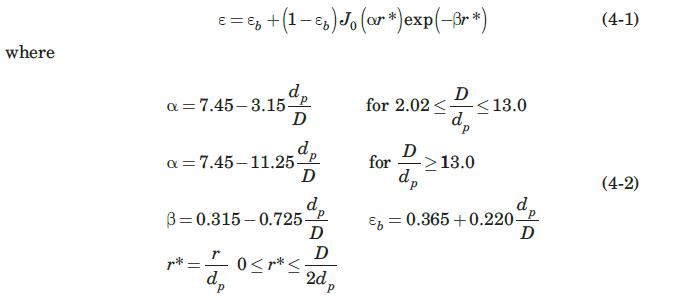(a) Show that the radial location of the maxima and minima of the function described by equation...
Question:
(a) Show that the radial location of the maxima and minima of the function described by equation (4-1) are the roots of the equation

(b) For the packed bed of Example 4.1, calculate the radial location of the first five maxima and of the first five minima; calculate the amplitude of the void fraction oscillations at those points.
(c) Calculate the distance from the wall at which the absolute value of the porosity fluctuations has been dampened to less than $10 \%$ of the asymptotic bed porosity.
(d) What fraction of the cross-sectional area of the packed bed is characterized by porosity fluctuations which are within $\pm 10 \%$ of the asymptotic bed porosity?
(e) Show that the average void fraction of a bed packed with equal-sized spheres $\varepsilon_{a v}$ is given by

(f) For the packed bed of Example 4.1, estimate the average void fraction by numerical integration of equation (4-71) and estimate the ratio $\varepsilon_{a v} / \varepsilon_{b}$.
Data From Example 4.1:-
It is well known that the wall in a packed bed affects the packing density resulting in void fraction variations in the radial direction. Mueller (1992) developed the following equation to predict the radial void fraction distribution in a cylindrical tower packed with equal-sized spheres:

J0 = Bessel function of the first kind of order zero r = radial distance measured from the wall Consider a cylindrical vessel with a diameter of 305 mm packed with solid spheres with a diameter of 20 mm. Plot the radial void fraction fluctuations near the walls for this packed bed.
Step by Step Answer:





